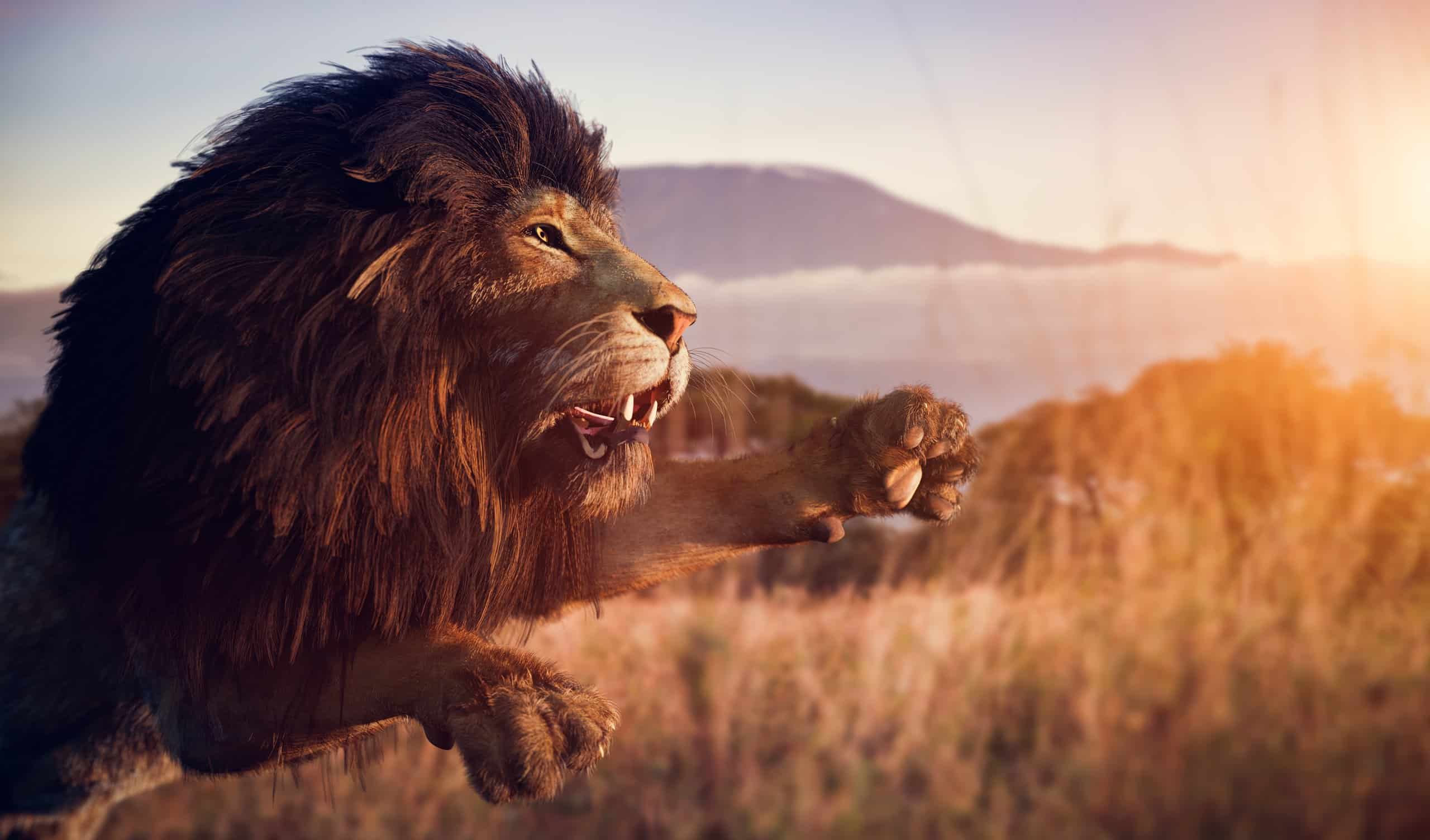Lions are one of the quintessential species of Africa, but they once ranged much further. In the past their habitat included parts of Asia and Europe as well as most of the continent of Africa. Today, they are extinct in 94 percent of their historic range and are a vulnerable species in their remaining habitats in sub-Saharan Africa and India. The number of lions has fallen from 200,000 to just 20,000 over the past 50 years. 21 countries still have wild lions, but the population continues to dwindle. Let’s explore where lions still live and what their host countries are doing to help conserve them. This list is arranged in ascending order based on the number of lions estimated still living within that country’s borders.
21. Central African Republic

Lions once ranged across Africa, Southern Europe, and Asia. Their range now consists of 20 African countries, plus India.
©JMx Images/Shutterstock.com
About 50 lions remain in the Central African Republic. Many of them live in the Chinko Nature Reserve in the eastern part of the country. The Lion Recovery Fund is working with local herdsmen to create livestock corridors around the wilderness zone to keep lions and people separated.
20. Niger
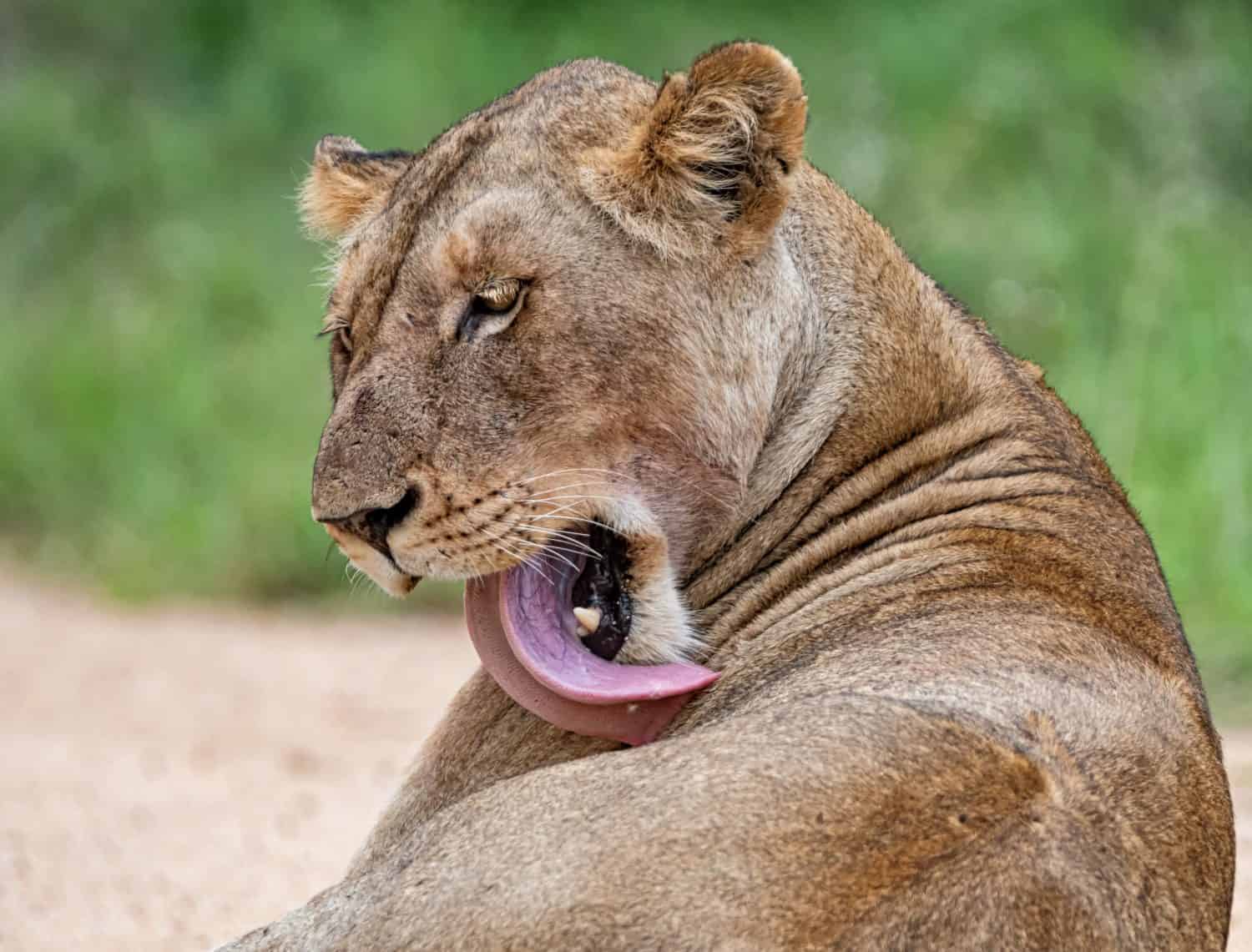
Lions live in a variety of habitats: grasslands, woodlands, and savannas.
©Cathy Withers-Clarke/Shutterstock.com
There are about 100 lions left in Niger within the W-Arly-Pendjari (WAP) protected area. 90% of the lions in West Africa live in this wilderness reserve.
19. Cameroon
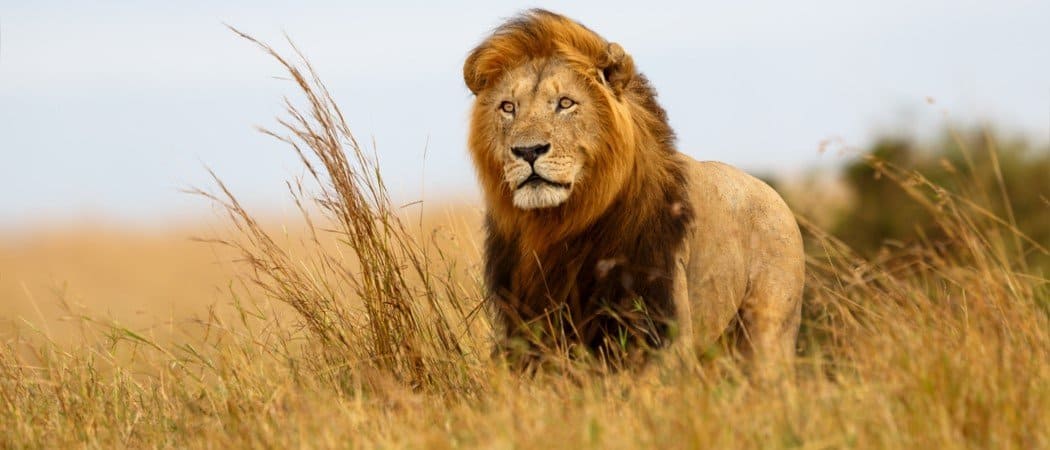
Lions often appear sedentary but can reach speeds of 37 mph (60 km/hr) in short bursts to cut off escape for their prey.
©iStock.com/MaggyMeyer
Cameroon has such diverse habitats it has been called a “miniature Africa.” There are rainforests in the south, savannahs in the middle of the country, and arid land in the north. About 100 lions live in protected areas in the northern part of the country.
18. Sudan
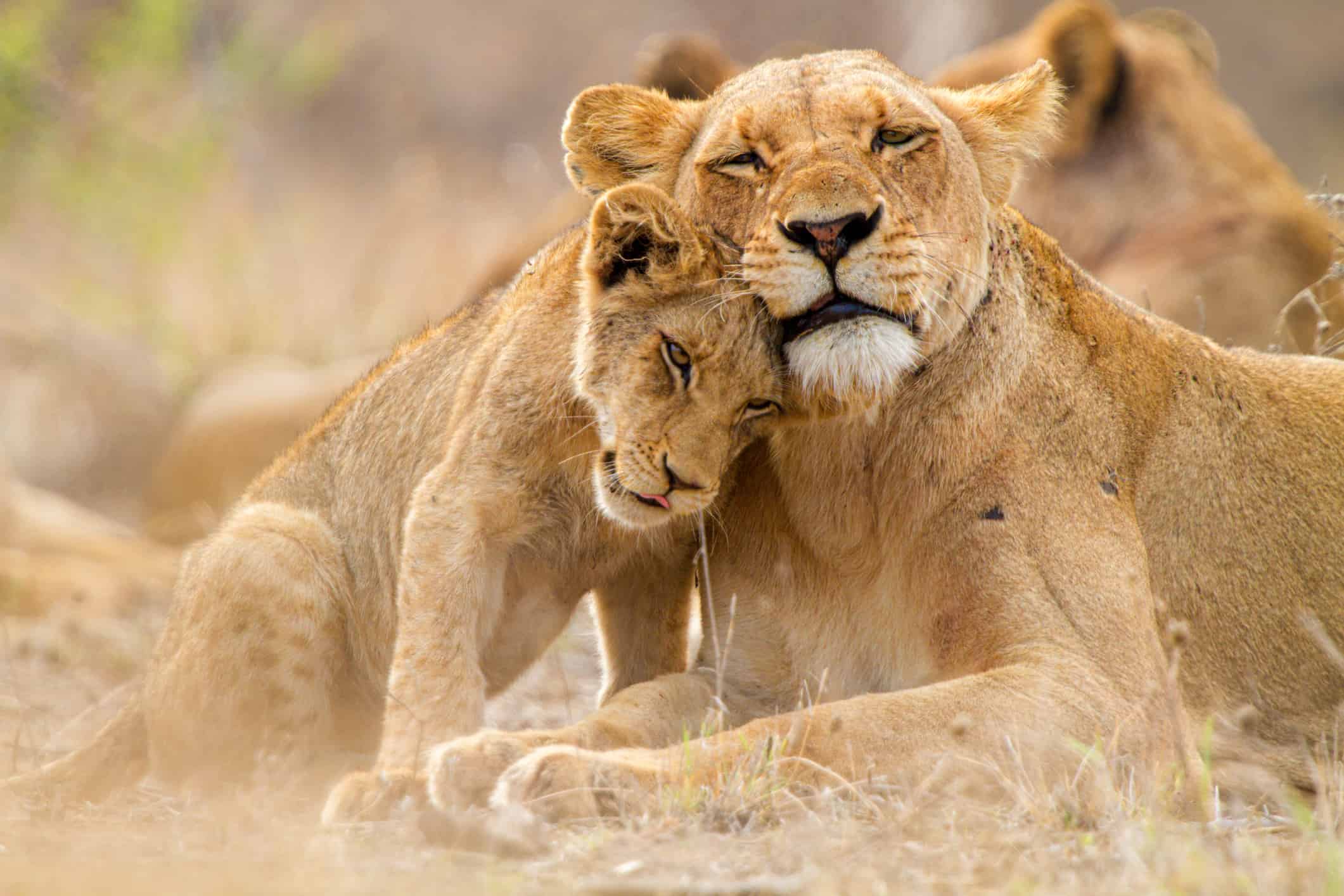
Before giving birth, a lioness separates herself from the pride in a secluded place.
©Thomas Retterath/iStock via Getty Images
Sudan is thought to have about 100 lions left, but it’s difficult to tell because the country is war-torn. Recently, 11 emaciated and traumatized lions were evacuated from Sudan to a big cat sanctuary in South Africa.
17. India
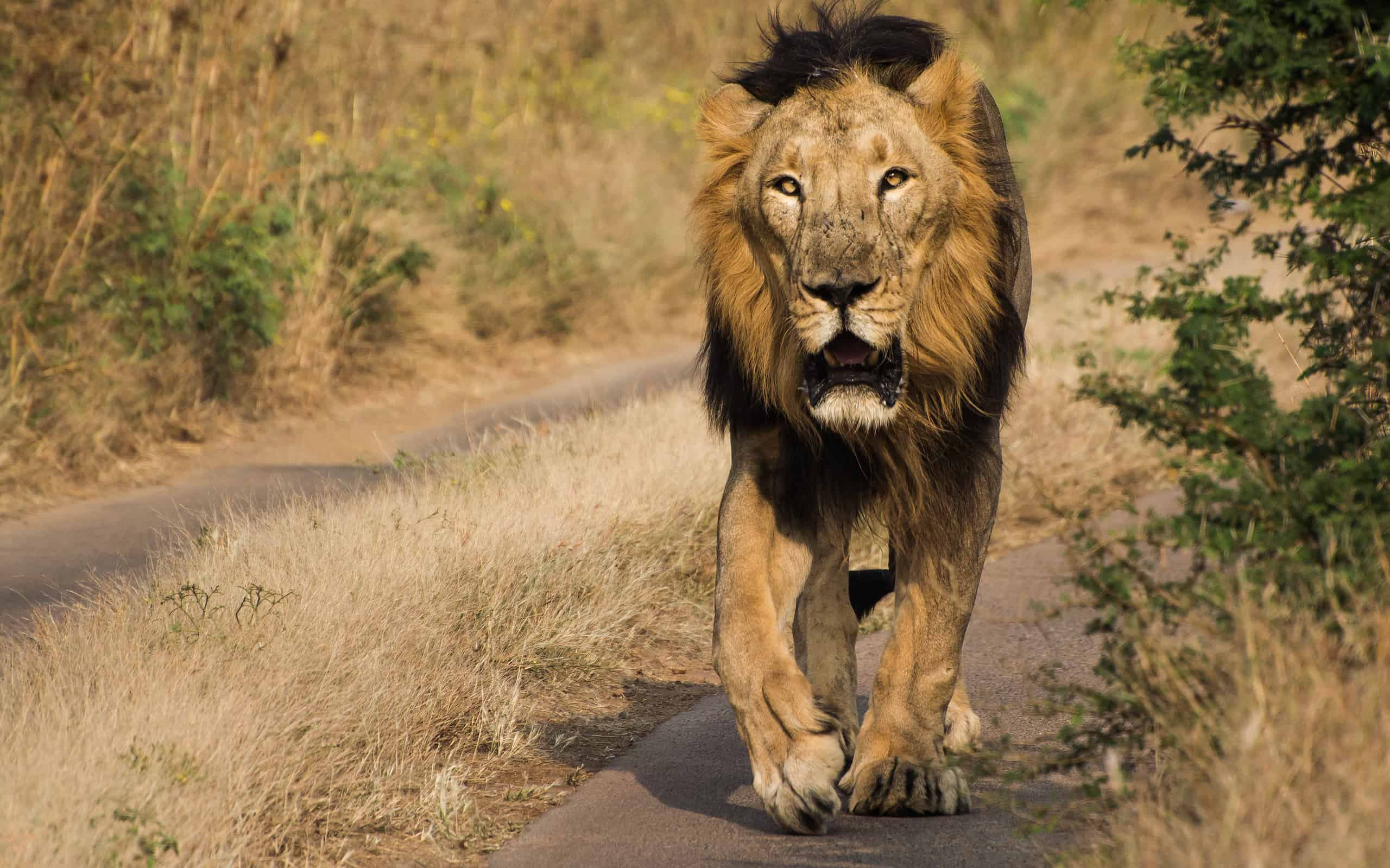
This is an Asiatic lion walking in the jungle of Gir National Park in India.
©ibrandcare/iStock via Getty Images
India has 100-600 Asiatic lions protected in the Gir National Park in the state of Gujarat. Having recently passed China to become the most populous country in the world, India has to take special care to make sure human activities do not infringe on the habitats of protected species.
16. Senegal
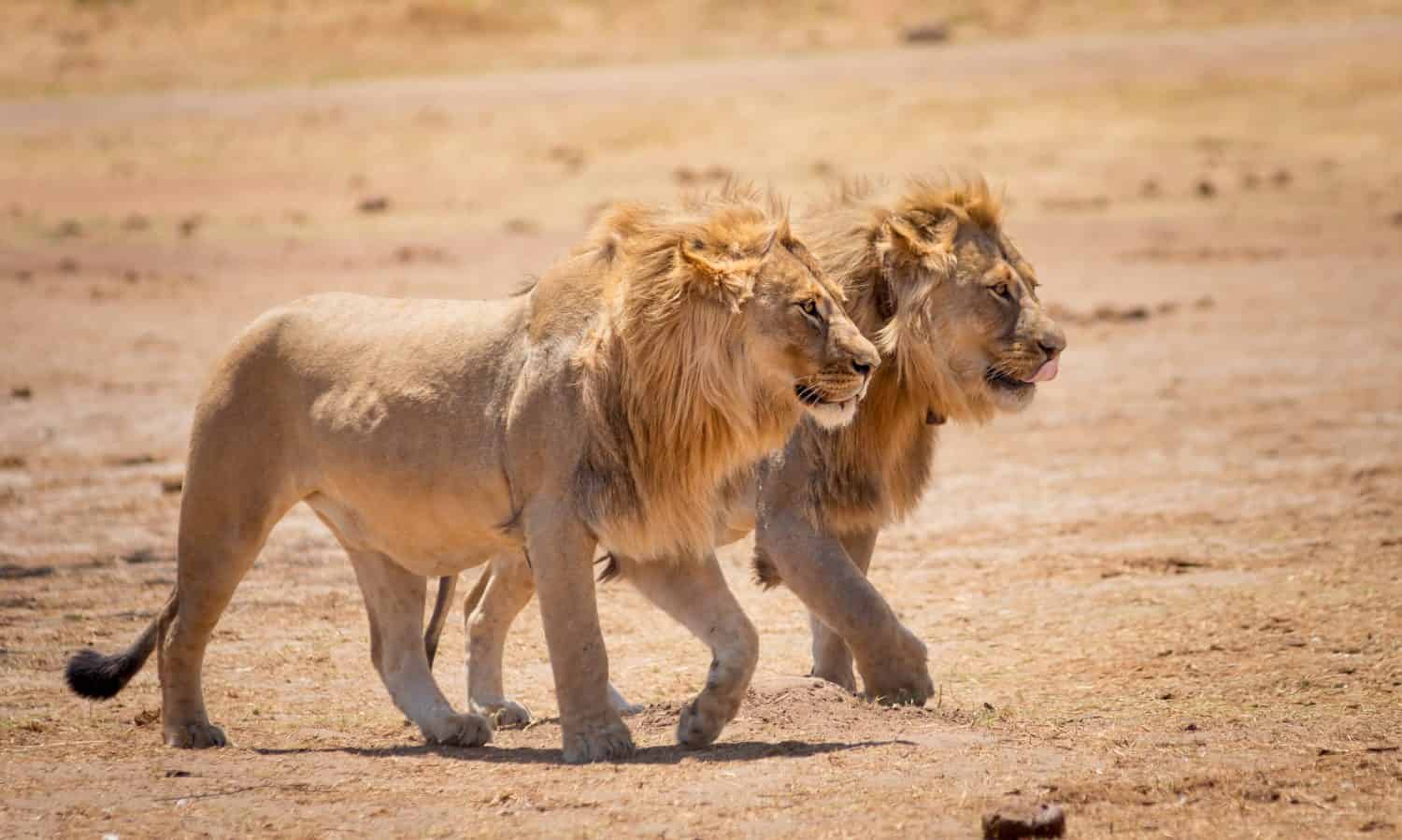
Lions will eat over 40 different species but usually concentrate on 2-3 main ones that are available in their habitat.
©Gray Aletter/Shutterstock.com
There are only about 250 West African lions left in the world and 150 of them live in Senegal. The country has partnered with conservation organizations to track and monitor them. This scientific monitoring, along with strict anti-poaching enforcement, has doubled the lion population in Senegal’s Niokolo Koba National Park.
15. Chad
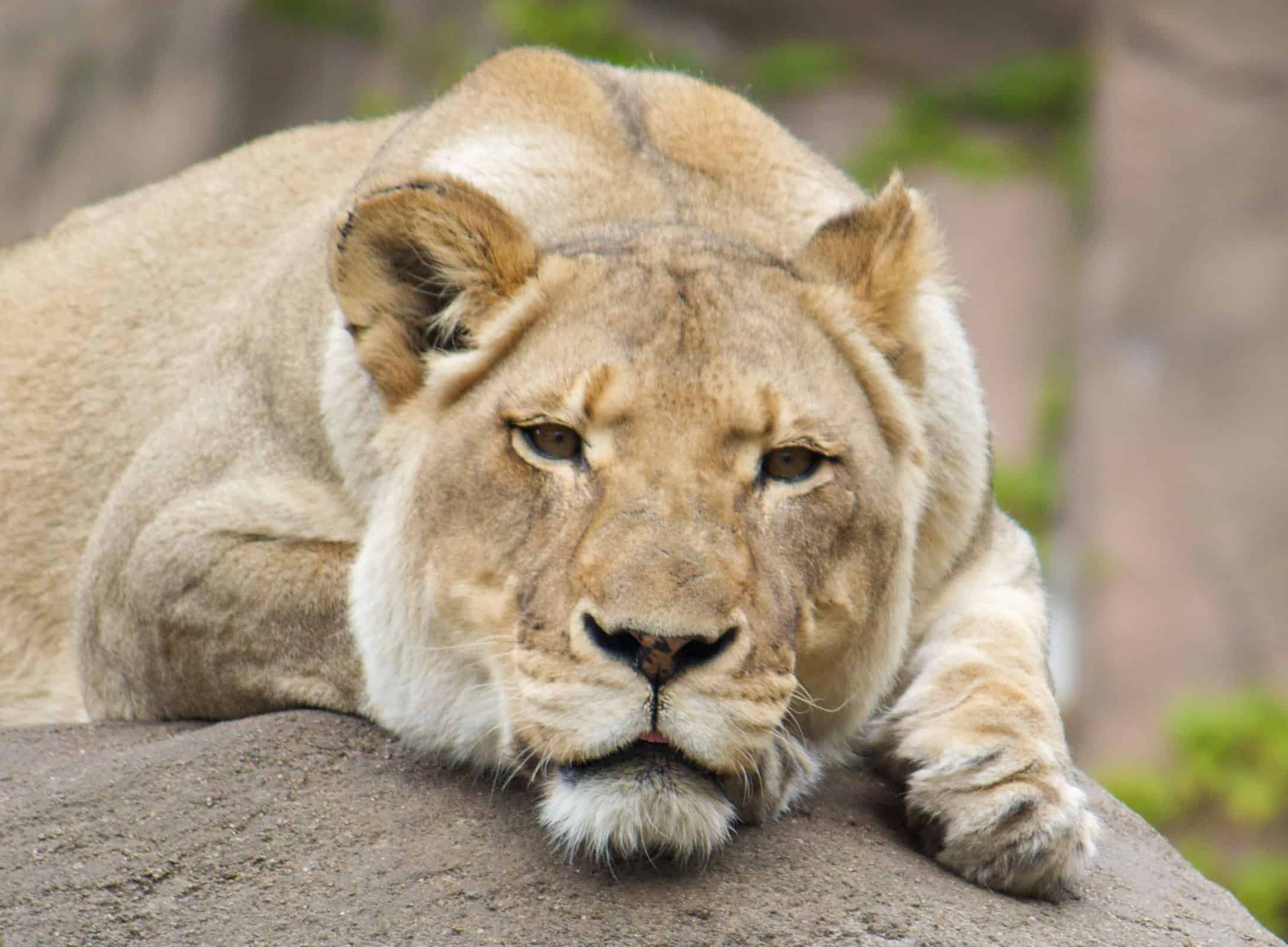
Lion prides are made of related females, unrelated males, and their cubs.
©jason krac/iStock via Getty Images
200 lions call the Saharan country Chad their home. Working with conservation organizations, Chad has been able to grow its lion population in the Zakouma National Park.
14. Burkina Faso
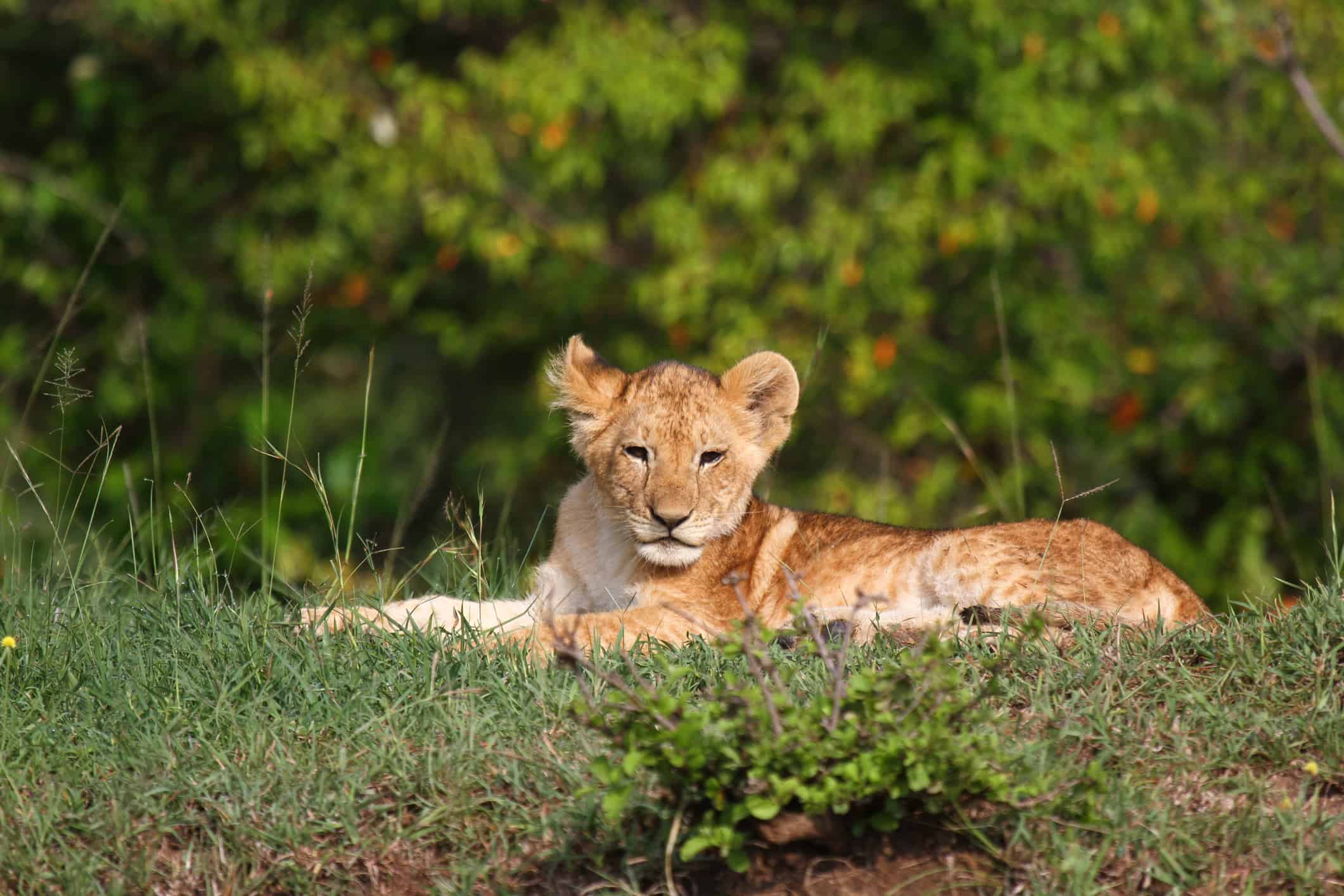
Lion cubs have faint spots that look like dappled light, helping to camouflage them from predators.
©Alla Tsytovich/iStock via Getty Images
Burkina Faso’s 250 lions live mainly in the W-Arly-Pendjari (WAP) protected area in the border regions of Benin, Burkina Faso, and Niger. In West Africa, 90% of lions live in this wilderness area.
13. Benin
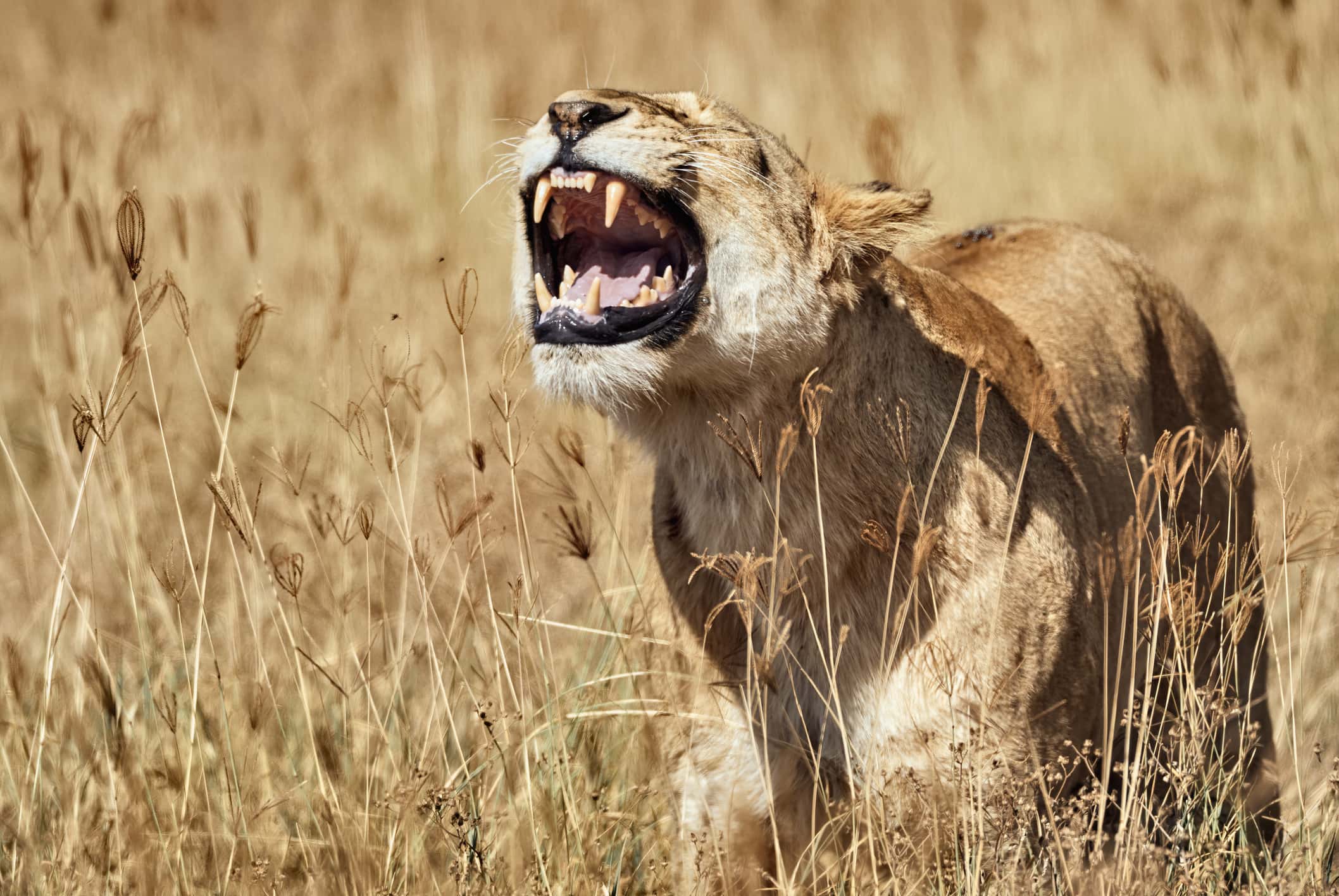
The roar of a lion is nearly as loud as thunder and can be heard up to 5 mi (8 km) away!
©LuCaAr/iStock via Getty Images
Pendjari National Park in Benin is an important area for lion conservation. It is part of the W-Arly-Pendjari (WAP) protected area that includes parts of Benin, Burkina Faso, and Niger. 90% of West Africa’s lions live in this wilderness area. The lion population in Benin is about 350.
12. Malawi
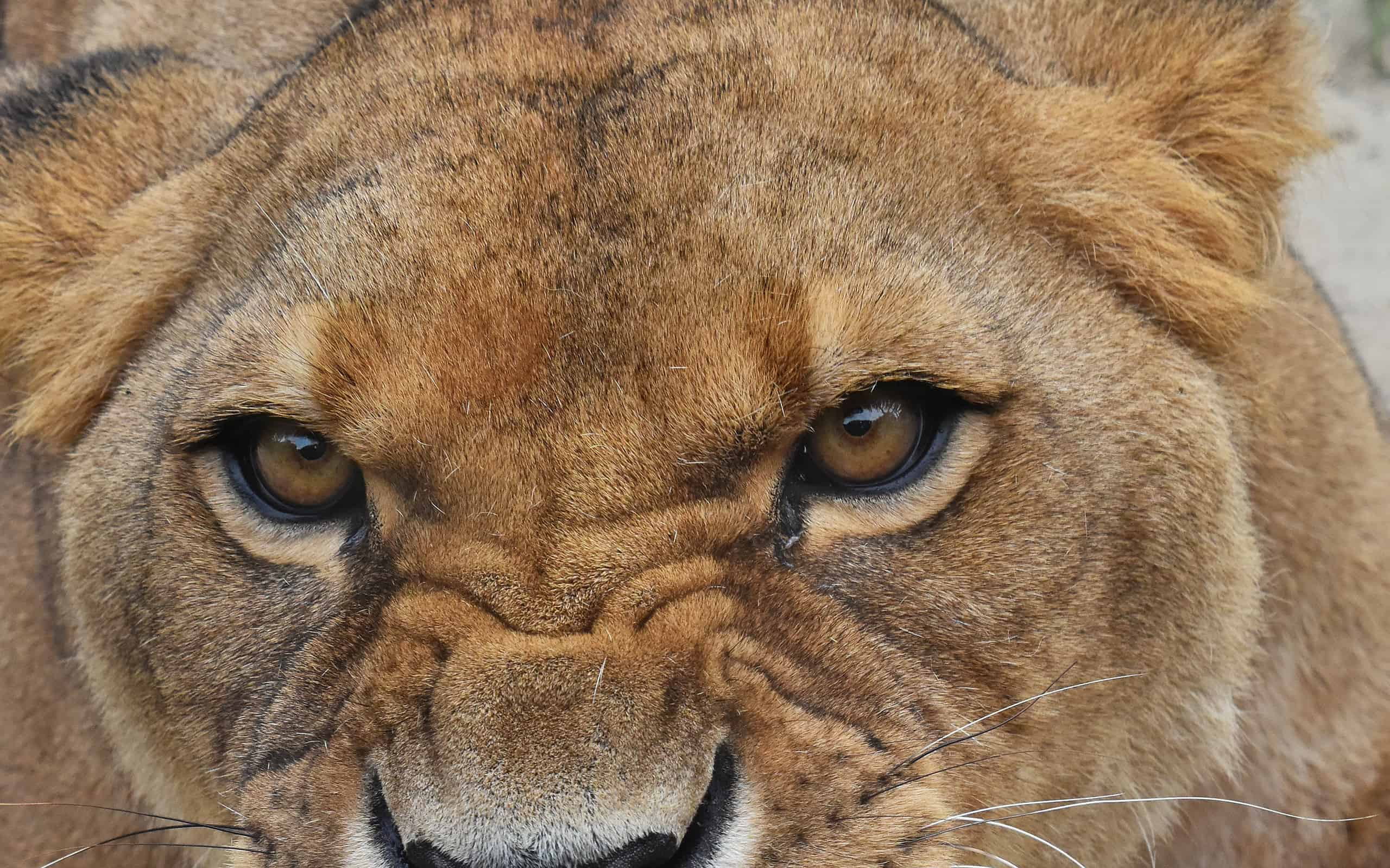
Newborn cubs have grey or blue eyes, but as they mature, their eyes turn brown or amber.
©BreakingTheWalls/iStock via Getty Images
Malawi is a relatively small country but it has a substantial population of about 500 lions. With support from the Dutch government and conservation organizations, lions were successfully reintroduced to Liwonde National Park after they had gone extinct there.
11. Ethiopia
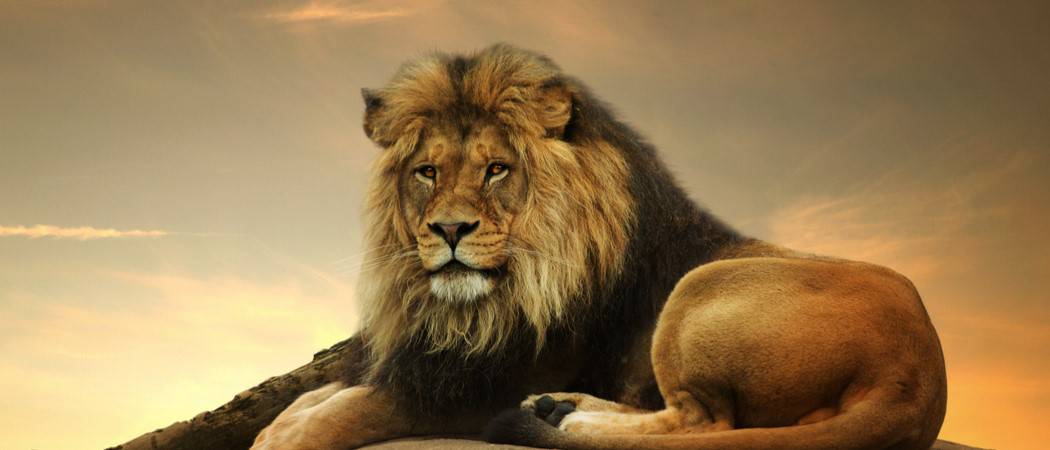
Male lions weigh up to 500 lbs. (225 kg). Their manes darken with age.
©iStock.com/Aniket Mane
Ethiopian lions are genetically rich and distinct because the region has been a sort of crossroads between southern, northern, and Middle Eastern lion species in the past. About 800 lions survive in the country today. Ethiopia is a heavily populated country with 120 million people and very little wilderness left for lions.
10. Uganda
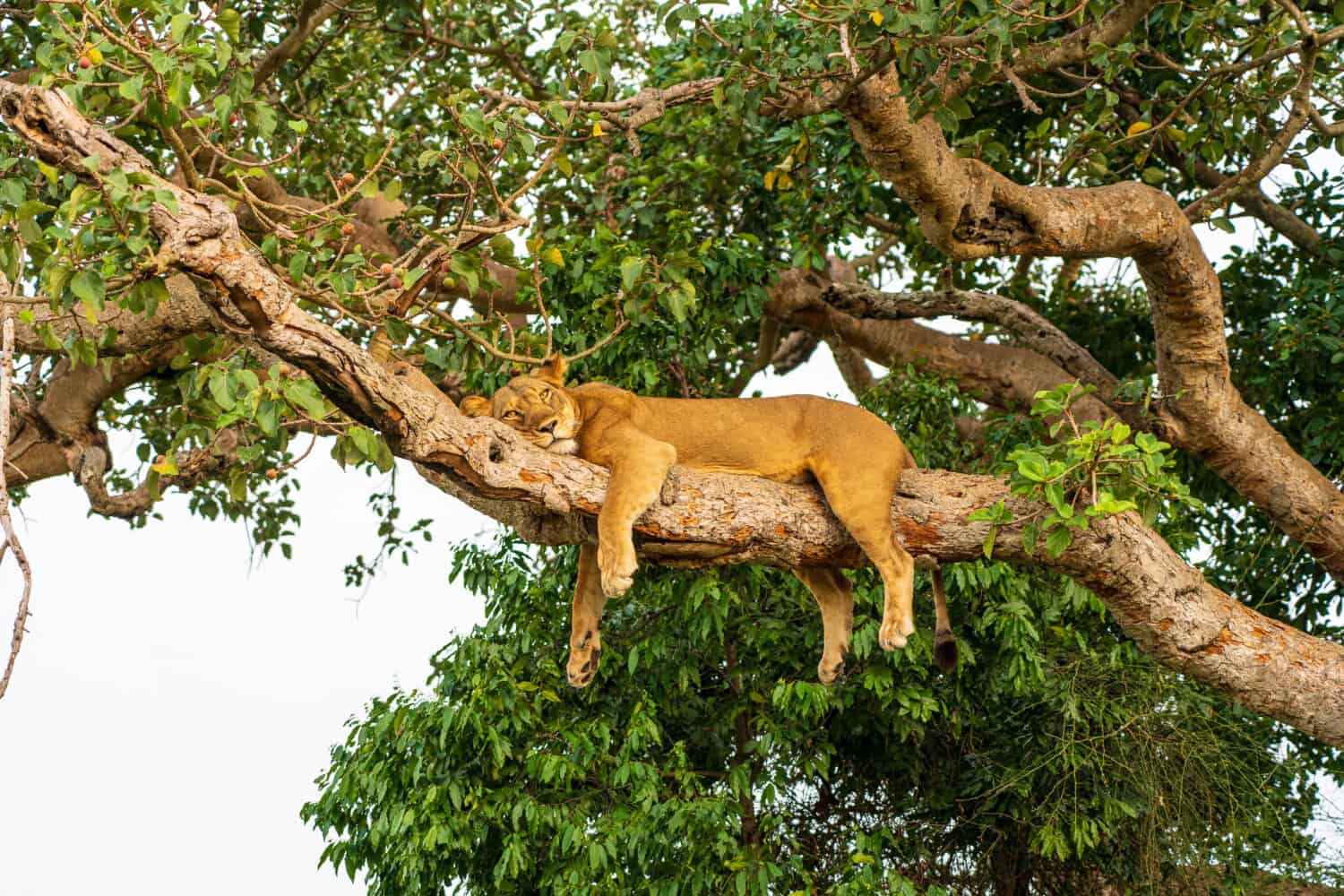
This lioness at Queen Elisabeth National Park, Uganda, has found an obviously comfortable way to snooze away a hot afternoon.
©D.Cz./Shutterstock.com
There are about 900 lions in Uganda, a quite small East African nation. Most of them live in one of three national parks: Murchison Falls National Park, Kidepo Valley National Park, and Queen Elizabeth National Park. The COVID-19 crisis impacted conservation because it drew funds away from the Uganda Wildlife Authority for pandemic-related problems.
9. Angola
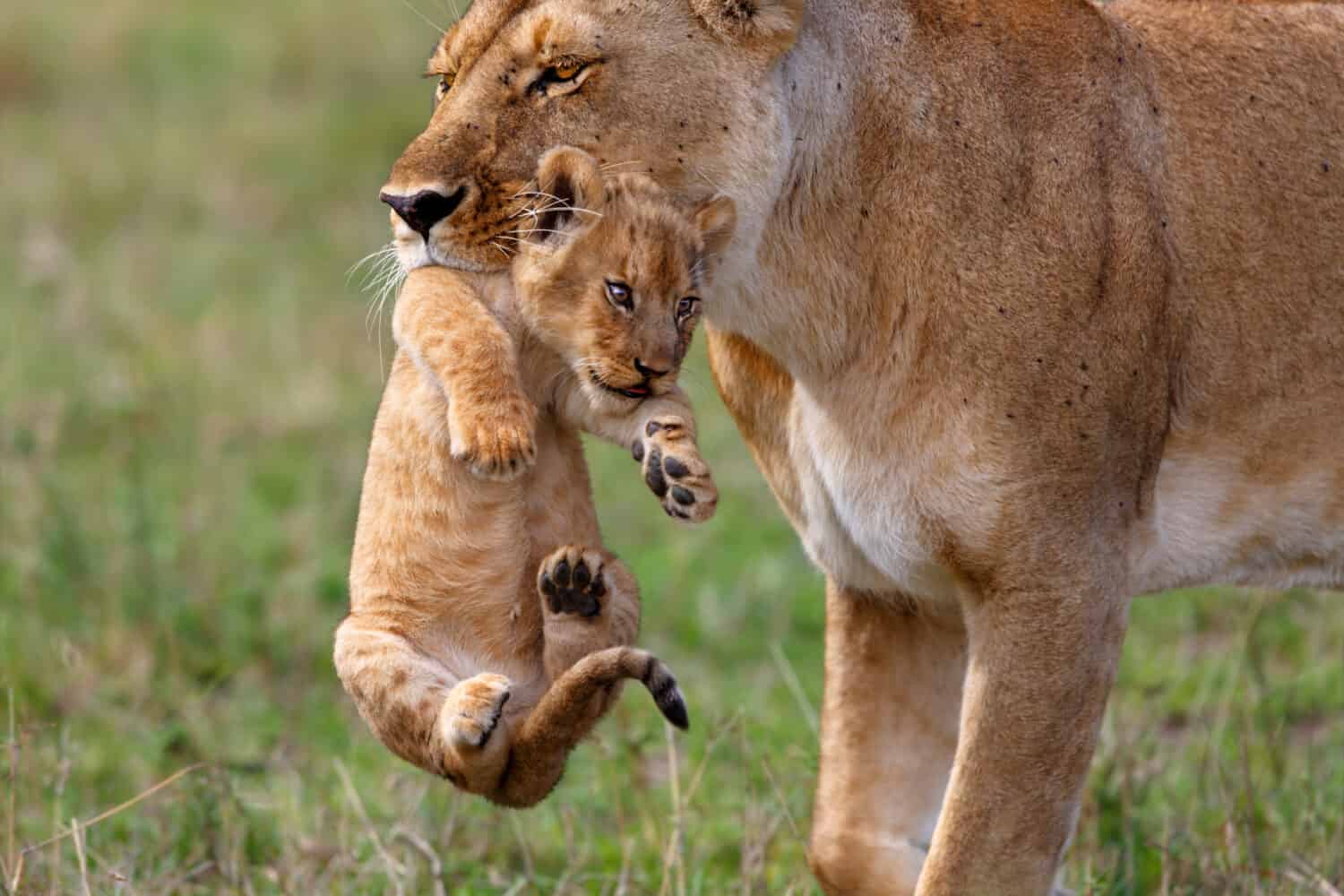
Lion cubs are only 53 oz. (1.5 kg) at birth. After they’re born their eyes remain closed for another 3-11 days.
©Maggy Meyer/Shutterstock.com
Angola has about 1,000 lions remaining. The big cat conservation organization Panthera is supporting the management of Angola’s 30,000 square mile Luengue-Luiana National Park, which is considered to have great potential for increasing lion numbers in the country.
8. Namibia
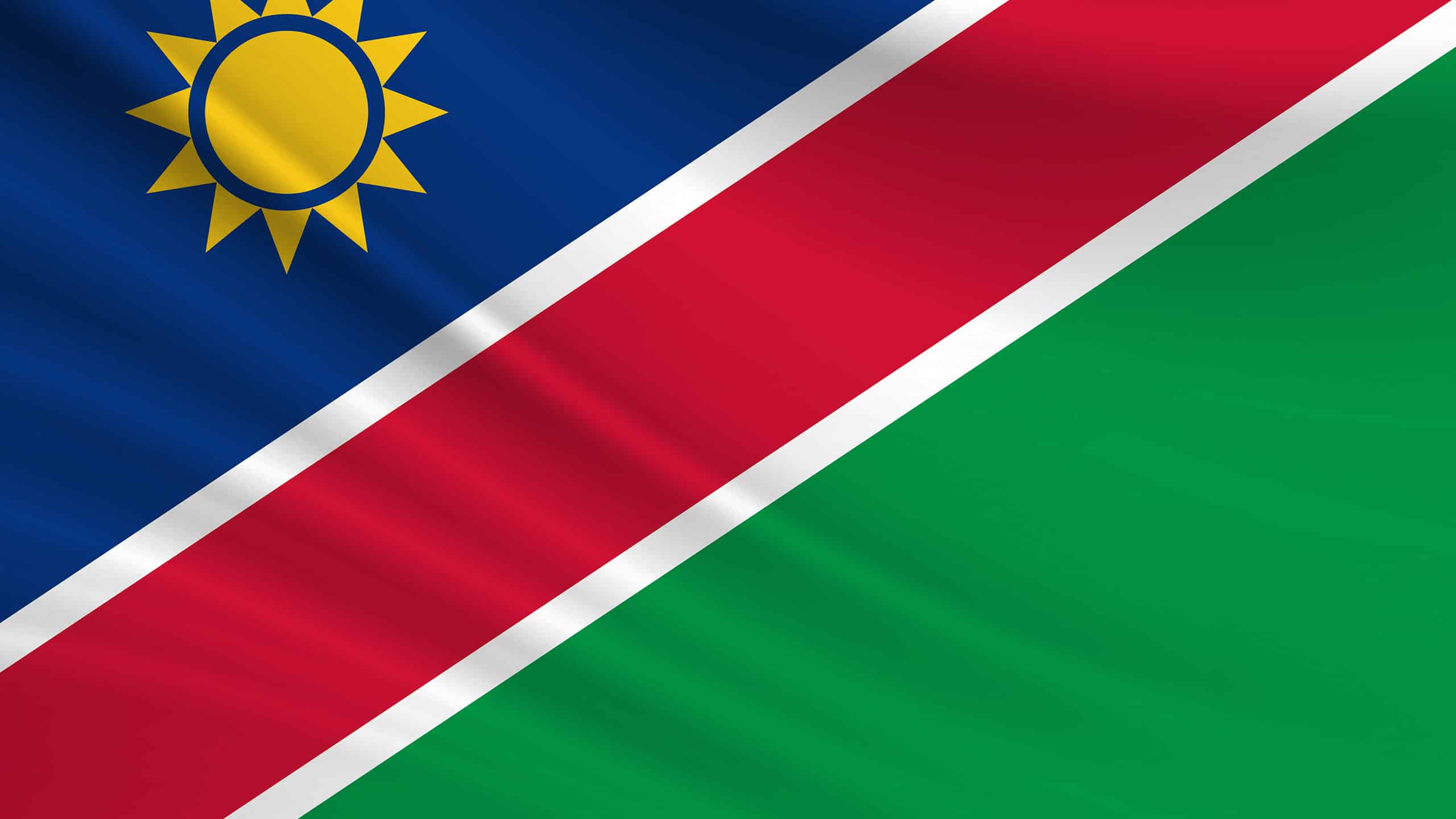
These lions in Etosha National Park, Namibia, are feasting on a young rhino.
©Faievych Vasyl/Shutterstock.com
Namibia is a thinly populated country mainly covered by the Namib and Kalahari deserts. Of the country’s 1,435 lions, a large concentration lives in the northern Namib in the coastal part of the country. Desert Lion Conservation is one of the organizations working to study this population and improve its chances of survival.
7. Mozambique
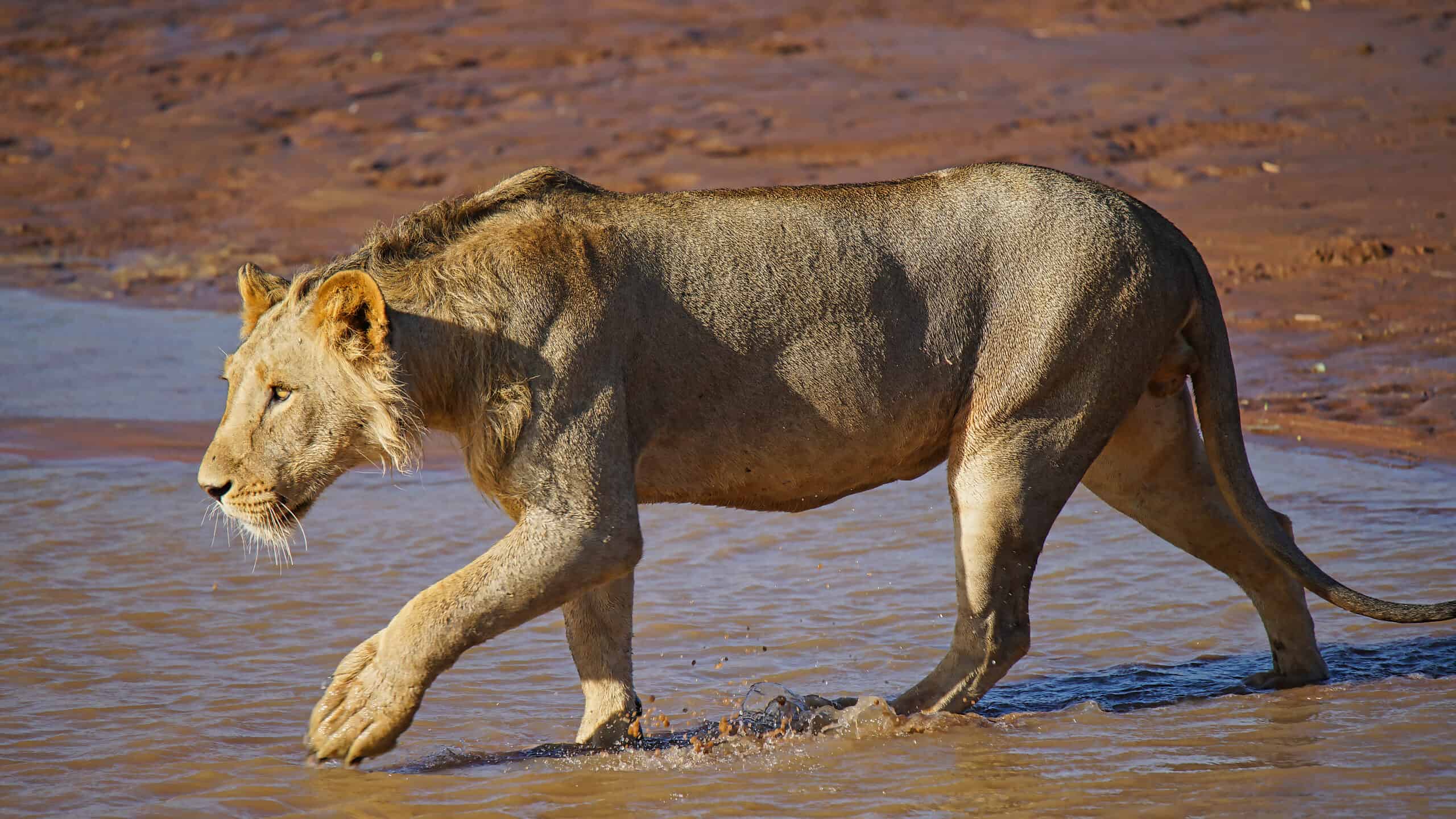
Lions have excellent vision but they cannot move their eyes side-to-side well. Instead, they move their whole head back and forth when scanning for prey.
©twabian/Shutterstock.com
1,500 lions live in Mozambique. One of the largest lion populations in Africa is the Niassa Special Reserve, which is larger than Switzerland. Up to 1,000 lions live there. Mozambique’s National Administration of Conservation Areas is in charge of protecting them.
6. Zimbabwe
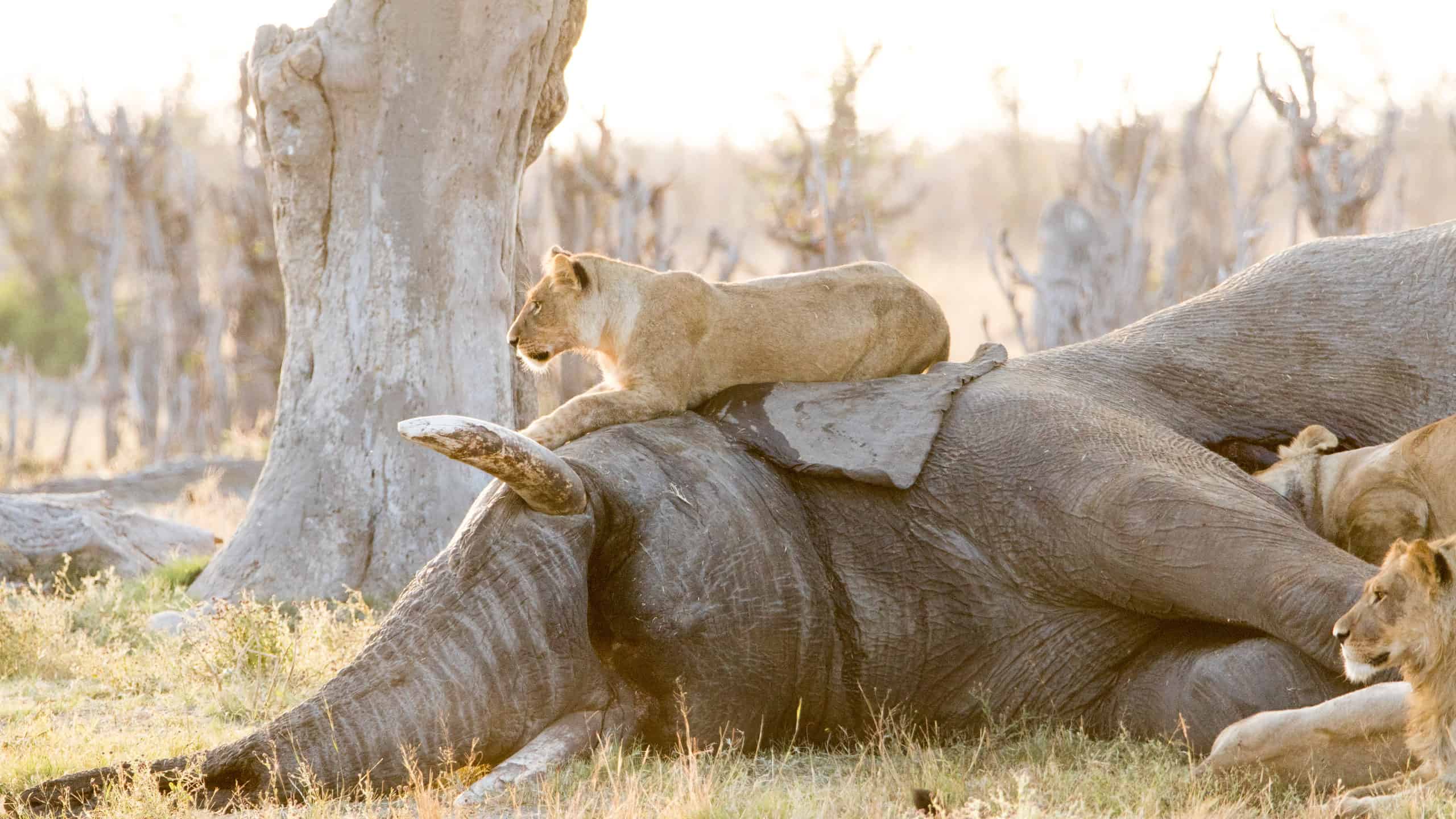
When they are desperate enough, lions will bring down an elephant. Zimbabwe has over 100,000 elephants but a capacity for only half that many in their parks.
©John WP White/Shutterstock.com
The African Wildlife Foundation is working with the government of Zimbabwe to conserve the 1,709 lions living there. Some of the policies they advocate involve human-lion conflict mitigation and making sure local human populations have access to resources in lion country so that they don’t feel they have to kill the lions to gain access to water supplies, wild game, and other necessities. The country has several national parks to protect lions and other species.
5. Zambia
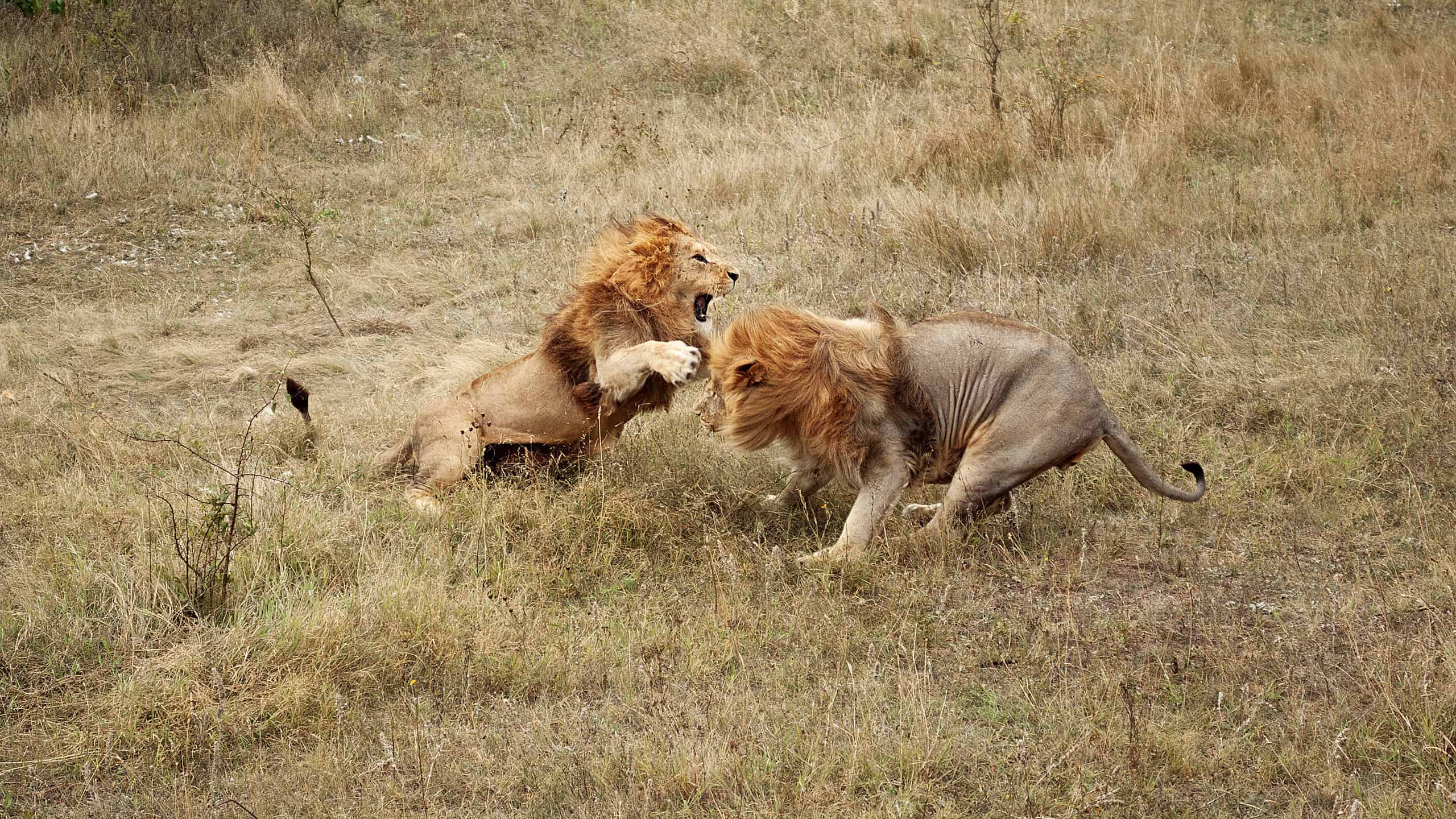
Male lions sometimes fight over territory and mates.
©Elagina/Shutterstock.com
Zambia’s 2,349 lion benefit from the country’s partnership with the SCI Foundation, which is helping authorities explore sustainable lion-hunting practices. An example of this is age-based trophy selection, which would cull old and sick lions from the pride and leave more resources for the younger breeding pairs and cubs. Funds earned by issuing licenses for controlled trophy-hunting can provide valuable resources for parks and conservation programs and create a high incentive to control poaching.
4. Kenya
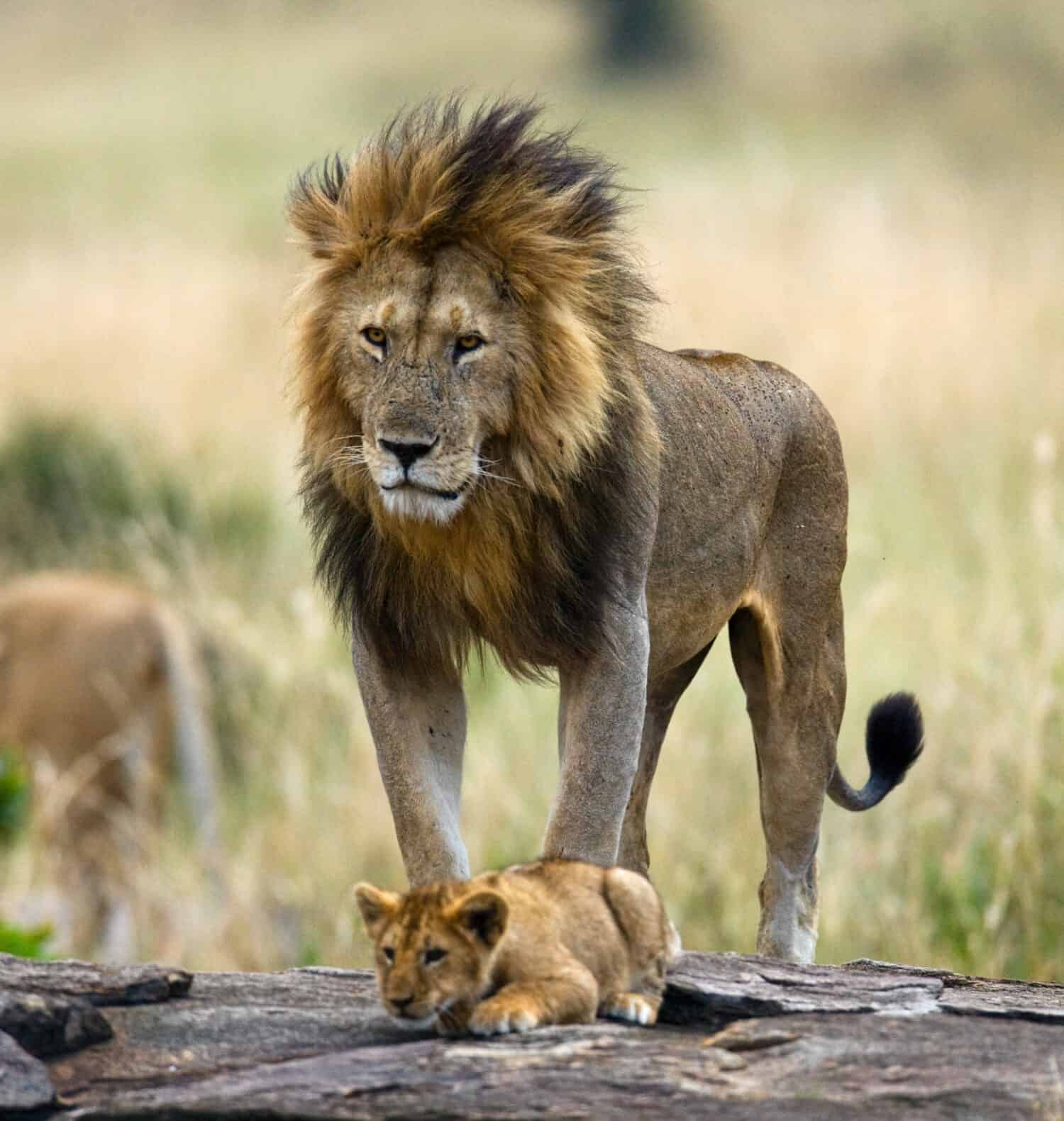
Male lions normally play no part in raising cubs and may kill the cubs of rival lions.
©GUDKOV ANDREY/Shutterstock.com
With 2,515 lions remaining, Kenya is struggling to maintain its wildlife population. It has the largest economy in East Africa, with agriculture being one of the mainstays of its prosperity. Many lions are killed due to encounters with farmers and ranchers. The Masai Mara has the largest concentration of lions and is a popular destination for photographic safaris.
3. Botswana
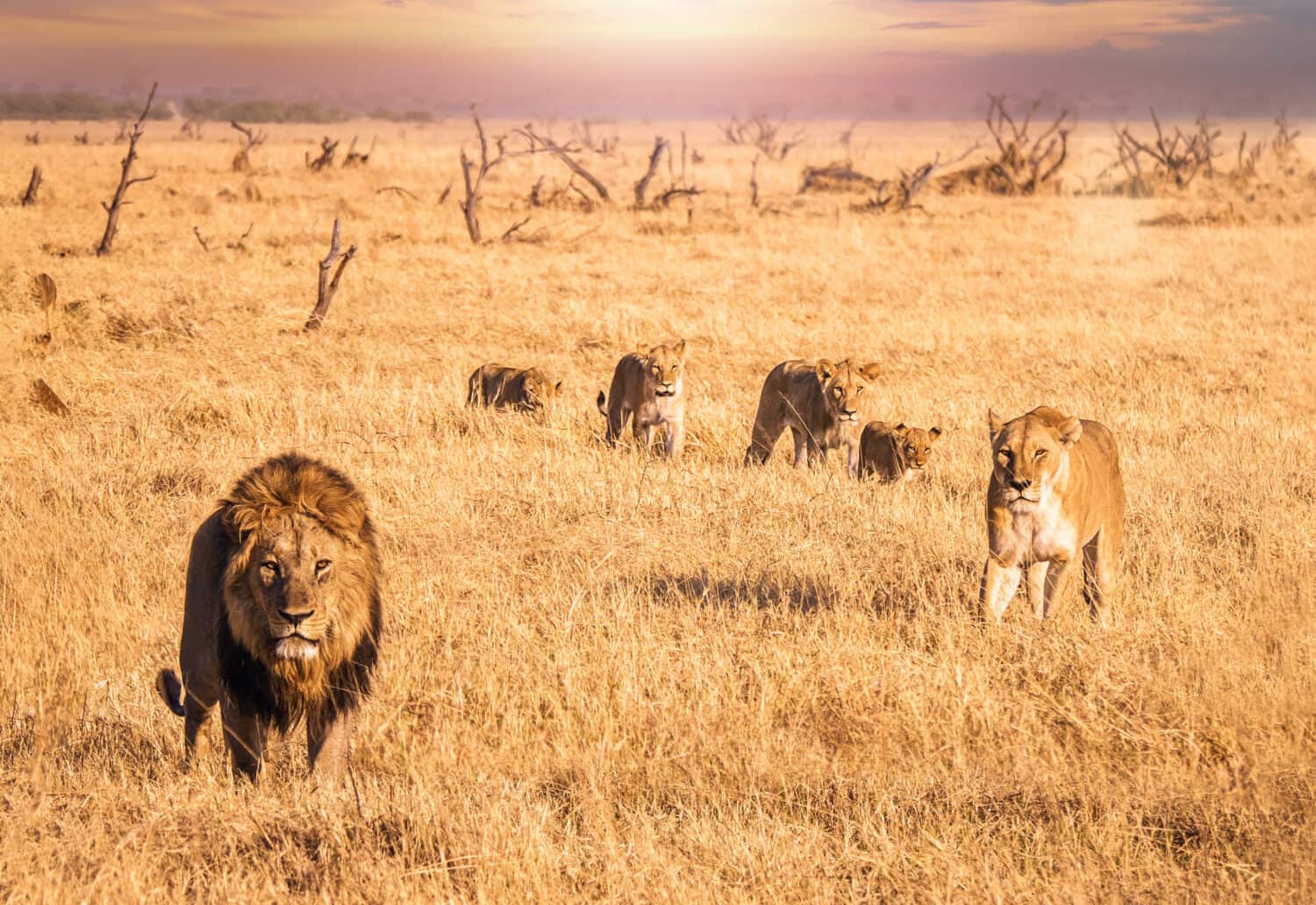
Male lions are stronger, but females are faster. For this reason, females do most of the hunting for the pride.
©CherylRamalho/Shutterstock.com
Botswana has 3,063 lions. They are a partially protected species there, so they can be hunted only with a permit. Killing a lion must be reported within 7 days or the hunter could be fined and imprisoned.
2. South Africa

Drivers need to be attentive when driving through South Africa’s Kgalagadi Transfrontier Park in the Kalahari.
©Gaston Piccinetti/Shutterstock.com
South Africa has 3,284 lions. It’s a popular adventure tourism destination that welcomes volunteers to its lion sanctuaries as a way to spread awareness of conservation issues. The government recently announced a ban on breeding lions for hunting.
1. Tanzania

A group of lions and cubs rest in a tree in Tanzania. This gives them shade, protection from predators, and a vantage point for spotting prey.
©iStock.com/Wirestock
Tanzania has the largest lion population (14,500). Fortunately the numbers have held steady in spite of habitat loss and poaching. Tanzania has numerous national parks to protect lions and other species, including Serengeti National Park.
| Rank | Country | Lion Population |
|---|---|---|
| Total | World | 20,000-39,000 |
| 1 | Tanzania | 14,500 |
| 2 | South Africa | 3,284 |
| 3 | Botswana | 3,063 |
| 4 | Kenya | 2,515 |
| 5 | Zambia | 2,349 |
| 6 | Zimbabwe | 1,709 |
| 7 | Mozambique | 1,500 |
| 8 | Namibia | 1,435 |
| 9 | Angola | 1,000 |
| 10 | Uganda | 900 |
| 11 | Ethiopia | 800 |
| 12 | Malawi | 500 |
| 13 | Benin | 350 |
| 14 | Burkina Faso | 250 |
| 15 | Chad | 200 |
| 16 | Senegal | 150 |
| 17 | India | 100 |
| 18 | Sudan | 100 |
| 19 | Cameroon | 100 |
| 20 | Niger | 100 |
| 21 | Central African Republic | 50 |
Thank you for reading! Have some feedback for us? Contact the AZ Animals editorial team.

